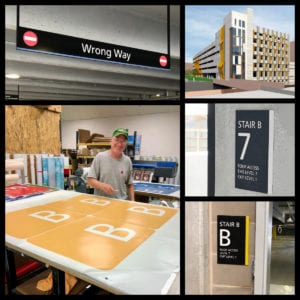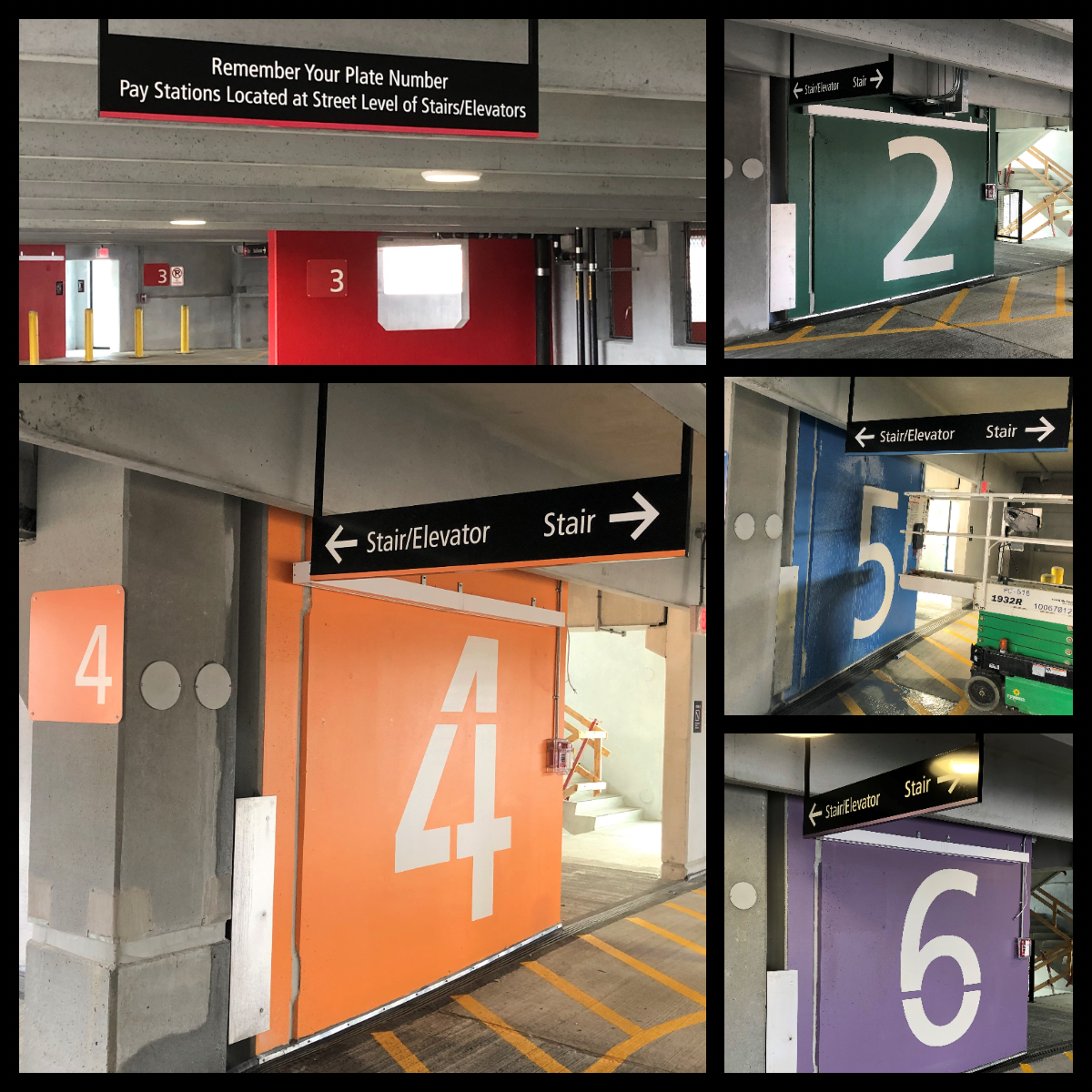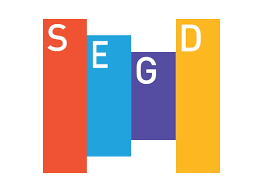Hanging Signs Isn’t Always a Straightforward Task
Architectural Signage, Exterior Signage, Functional Signage, Others, Sign Design, WayfindingYou’d think a parking garage would be a fairly cut and dry project, with color-coded signs for each level, arrows to direct traffic flow, ADA signage, elevator occupancy signs, and indications pointing out stairwells, right?
Well, like the posted 5 mph speed limit, not so fast.
A lot more planning and coordination goes into designing, manufacturing, and installing signs for a parking deck than it first appears. Metro began work on the Hamilton Canal Innovation District Parking Structure in collaboration with general contractor Shawmut Design and Construction of Boston, MA. In addition to providing signage for the brand new parking structure, future plans for this project include creating and installing signs for the office building yet to come.
Collaboration and Coordination: Critical Project Components
This project has presented some interesting challenges, not the least of which is that we’re one of many companies involved in its construction. It includes multiple architects, a parking garage consultant, the general contractor, the city of Lowell, and a national parks museum. With so many stakeholders each with their own scope — and a lot of balls juggling in the air at once — we know the critical importance of coordination and
communication.
In this case, we worked with union installation through a subcontractor, which required even more coordination. Because our work depended on the progress of other contractors’ projects, we communicated regularly with the general contractor tasked with managing all the moving parts. We had to wait, for example, for one vendor to finish painting walls before we could hang handicap/ no parking signs. Other spots needed striping before we could install the signs.
A Challenge Escher Would Appreciate
An interesting fact that the average person probably doesn’t consider when scoping out a parking spot in one of these garages is that nothing is straight. Where does level 4 end and level 5 begin? When we designed our signage package, we had to consider ceilings, floors, and ramps — none of which is straight!
That curvature required us to design signs that hang from the ceiling with enough clearance so cars don’t hit them. BUT the signs must hang low enough that they also don’t hit the concrete beams supporting the floor. AND the signs must hang level — even if the floors aren’t. So, we devised a plan to hang and install the signs to all those challenges, an endeavor that became a huge part of the project.
We did a lot of calculating and scenario planning to determine the length for each overall type of hanging sign. You can’t just bolt a sign’s arms in place without some serious math, because it needs freedom to swing if a car hits it. We made the metal arms longer than needed to pivot or swing, and when our guys went out in the field to do the install, they custom cut each arm to fit the exact spot.
The signs look level and hang at the right height to clear the beams and provide enough overhead. But depending on whether the ceiling slants up or down and which direction the sign faces, chances are that one arm’s longer than the other.
This kind of info’s not something you can see in a drawing. And you often don’t find out what will work — or fail spectacularly — until you’re out in the field. We knew we had to meet certain requirements. The architect assigned certain hanging signs to specific spots in the basement, for instance. But that level’s very low ceiling meant we’d go below the required seven foot clearance. So we collaborated with the general contractor to execute more custom designed signs that would — and did — fit.
Creative adjusting and design on the fly is all in a day’s work here at Metro!

